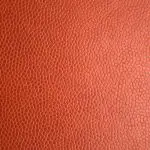Do you ever wonder about the hidden secrets behind impeccably tailored garments? Interlining is the unsung hero that plays a crucial role in achieving that flawless look.
It's the hidden layer between the fabric and lining that provides structure, support, and shape to your clothing. By using various interlining materials, you can manipulate the drape, texture, and stability of fabrics, ultimately enhancing the overall quality and durability of your garments.
Understanding the intricacies of interlining and its impact on fabrics will empower you to master the art of creating impeccably crafted clothing that stands the test of time.
Key Takeaways
- Interlining provides structure, support, and shape to garments.
- Different interlining techniques include fusible and sew-in interfacings.
- Interlining materials have varying effects on fabric drape.
- Interlining enhances the strength of fabric and improves its durability.
The Basics of Interlining
You might think of interlining as a way to beef up the fabric, adding extra weight and structure to your garments. Interlining techniques play a crucial role in achieving the desired outcome.
When considering interlining application, it's essential to understand the various techniques available and how they can be applied to different fabrics.
Fusible interfacings are commonly used and can be easily applied by ironing them onto the fabric. This method provides a quick and efficient way to add stability to the material.
Sew-in interfacings, on the other hand, involve stitching the interlining to the fabric, offering a more flexible and pliable result. Understanding these interlining techniques allows you to choose the most suitable method based on the fabric and the desired outcome of your project.
When it comes to interlining application, precision is key. Ensuring that the interlining is cut accurately and applied evenly can significantly impact the final result.
Types of Interlining Materials
So, what're the different interlining fabric options available to you?
How do these materials impact the drape of your fabric?
And what functional benefits can you expect when using different interlining materials in your sewing projects?
Let's explore these points to help you better understand the types of interlining materials and their effects on fabrics.
Interlining Fabric Options
Interlining fabric options encompass a variety of materials that can significantly impact the properties of the final garment. When considering interlining fabric options, cost comparison is essential.
Explore different materials such as polyester, which is cost-effective but may not offer the same quality as natural fibers like cotton or silk.
Additionally, consider the environmental impact of interlining materials. Eco-friendly options like organic cotton or bamboo offer sustainability and biodegradability, but they may come at a higher cost.
Lastly, think about the performance attributes needed for the garment. For instance, if you require insulation, wool interlining may be a suitable choice despite its higher cost.
Evaluating these factors will help you select the most suitable interlining fabric for your specific garment.
Impact on Fabric Drape
When evaluating interlining fabric options for impact on fabric drape, consider the drape quality of the chosen material and its compatibility with the garment's design. Fabric flexibility is a key aspect to consider when selecting interlining materials. The interlining should enhance the fabric's movement and drape, providing structure without compromising the natural flow of the fabric. Different interlining materials have varying effects on fabric drape, so it's essential to choose one that complements the specific fabric and design of the garment. Here's a comparison of how different interlining materials impact fabric drape:
| Interlining Material | Impact on Fabric Drape | Compatibility with Garment Design |
|---|---|---|
| Fusible Interfacing | Minimally affects drape | Suitable for structured garments |
| Sew-In Interfacing | Preserves fabric drape | Ideal for lightweight fabrics |
| Knit Interfacing | Enhances fabric movement | Great for stretchy fabrics |
Understanding the impact of interlining materials on fabric drape is crucial for achieving the desired look and feel of the garment.
Functional Benefits for Sewing
To understand the functional benefits of interlining materials for sewing, consider their compatibility with different fabric types and garment designs. When choosing interlining materials, it's essential to understand their functional benefits for sewing techniques. Here's what you need to know:
- Enhanced Stability: Interlining materials provide added stability to fabrics, ensuring ease of sewing and preventing stretching or distortion during the sewing process.
- Improved Durability: By adding interlining materials, you can strengthen seams and prevent fabric fraying, enhancing the overall durability of the garment.
- Professional Finish: Certain interlining materials can help achieve a professional finish by providing structure and shape to garments, especially when using delicate or lightweight fabrics.
Understanding these functional benefits will allow you to select the most suitable interlining materials for your sewing projects, ensuring impeccable results.
Interlining's Impact on Fabric Drape
Enhancing fabric drape, interlining influences how a garment falls and moves against the body. The addition of interlining can significantly impact the stiffness and drape of a fabric. By adding weight and structure, interlining can alter the way a fabric hangs, giving it more body and improving its ability to drape elegantly. The weight and flexibility of the interlining material play a crucial role in determining the final drape of the garment.
A heavier interlining will provide more support and shape to the fabric, resulting in a more structured and less flowy drape. On the other hand, a lighter and more flexible interlining will allow the fabric to drape more fluidly, creating a softer and more natural silhouette.
When selecting interlining for a garment, it's essential to consider the desired drape effect. The interlining should complement the fabric, enhancing its natural drape without overpowering it. Understanding how interlining influences fabric drape empowers you to make informed decisions when creating garments, ensuring that the final drape aligns with your design vision.
Improving Fabric Structure With Interlining
Now, let's talk about how interlining can improve the structure of your fabrics.
It enhances the strength of the fabric, creating a smooth surface and adding warmth and insulation.
These improvements can make a significant difference in the overall look and feel of your garments.
Enhancing Fabric Strength
You can improve the strength of your fabric by using interlining to enhance its structure. This technique involves incorporating an additional layer of fabric between the main fabric layers to provide reinforcement.
Here's how interlining techniques can enhance fabric strength:
- Increased Durability: Interlining helps distribute stress and strain across the fabric, preventing tears and prolonging the garment's lifespan.
- Enhanced Stability: By adding interlining, you can improve the fabric's stability, reducing stretching and distortion over time.
- Improved Support: Interlining can provide additional support to delicate or lightweight fabrics, making them more suitable for structured garments like jackets or coats.
Creating Smooth Fabric Surface
Improving fabric structure with interlining involves creating a smooth surface by strategically layering additional fabric to minimize surface irregularities and enhance the overall appearance and feel.
Fabric smoothing is achieved through interlining techniques, where an additional layer of fabric is inserted between the outer fabric and the lining during garment construction. This process helps to improve the fabric's drape, stability, and overall quality.
By strategically placing interlining, fabric finishing becomes more refined, providing a polished and professional look to the final garment. This technique is particularly beneficial for lightweight and sheer fabrics, as it adds body and opacity to the material, resulting in a smoother and more luxurious feel.
Understanding the art of interlining and fabric smoothing is crucial for mastering the intricacies of garment construction and achieving impeccable fabric structure.
Adding Warmth and Insulation
To enhance the fabric's warmth and insulation, interlining is strategically incorporated between the outer fabric and the lining during garment construction. This process offers several insulation benefits, making it an essential aspect of fabric structure:
- Thermal Regulation: Interlining helps regulate body temperature by providing an additional layer of warmth, making garments suitable for varying weather conditions.
- Enhanced Insulation: By adding an interlining, the fabric's insulation properties are improved, keeping the wearer comfortable in colder environments.
- Structural Support: The interlining also contributes to the structural integrity of the fabric, ensuring that the garment maintains its shape while providing warmth.
Interlining and Fabric Stability
How does interlining impact the stability of your fabric?
Interlining plays a crucial role in enhancing fabric stability. It not only influences the breathability of the fabric but also helps control shrinkage. By adding interlining to your fabric, you can improve its stability, ensuring that it maintains its shape and structure over time.
When it comes to fabric breathability, interlining can either enhance or reduce it, depending on the type of interlining used. For instance, adding a breathable interlining to a fabric can improve its overall breathability, allowing air to circulate through the material. On the other hand, a non-breathable interlining may reduce the fabric's breathability, making it more suitable for certain applications where breathability isn't a primary concern.
Moreover, interlining plays a significant role in controlling fabric shrinkage. By adding interlining to the fabric, you can minimize the risk of shrinkage, ensuring that the fabric maintains its original dimensions even after washing or exposure to moisture. This is particularly important for garments and textiles where maintaining the fabric's stability and shape is essential for long-term durability.
Enhancing Fabric Texture With Interlining
By adding the right interlining to your fabric, you can significantly enhance its texture, providing a desirable tactile experience and aesthetic appeal. The interlining not only adds volume and body to the fabric but also plays a crucial role in enhancing its durability, ensuring that it stands the test of time.
Here's how interlining can enhance fabric texture:
- Dimensional Stability: Interlining helps maintain the fabric's shape and structure, preventing it from stretching or distorting over time. This ensures that your garment retains its original form, giving it a polished and professional look.
- Improved Insulation: Certain interlining materials can provide added warmth and insulation to fabrics, making them suitable for winter wear. This not only enhances the comfort of the garment but also adds a luxurious feel to the fabric.
- Enhanced Durability: By reinforcing the fabric, interlining can significantly increase its durability, making it less prone to wear and tear. This is especially beneficial for high-traffic areas of the garment, such as collars and cuffs, ensuring that the fabric maintains its quality for longer periods.
Interlining's Influence on Garment Durability
Enhance the durability of your garments by carefully selecting the right interlining to ensure longevity and resilience in high-traffic areas.
Garment construction heavily relies on the use of interlining for fabric reinforcement. When choosing interlining for enhanced durability, consider the type of fabric and the stress areas of the garment.
For instance, in a jacket, the collar, cuffs, and pocket areas are subjected to frequent stress. Using a sturdy interlining in these areas will provide structural support, preventing fabric wear and tear.
Additionally, interlining can contribute to the overall strength of the garment, especially in high-stress areas, by distributing tension and reducing strain on the fabric.
By reinforcing the fabric with the appropriate interlining, you can significantly extend the lifespan of your garments, ensuring they remain resilient and long-lasting.
Selecting the right interlining for durability is a crucial element in garment construction, as it directly impacts the overall strength and longevity of the finished piece.
Frequently Asked Questions
Can Interlining Be Added to Any Type of Fabric, or Are There Limitations?
You can add interlining to most fabrics, but there are limitations. Thinner fabrics may not tolerate heavy interlining well. Interlining impacts fabric versatility by providing structure and insulation.
How Does Interlining Affect the Breathability of Fabrics?
When you add interlining to a fabric, it impacts breathability and overall fabric performance. The compatibility of the interlining material with the fabric affects how well air can pass through, influencing breathability.
Are There Any Specific Care Instructions for Fabrics That Have Been Interlined?
To maintain fabric durability after interlining, follow specific care instructions. Consider professional cleaning for delicate fabrics. Removal of interlining may affect breathability. Be mindful of environmental impact when choosing cleaning methods.
Can Interlining Be Removed From a Fabric, or Is It a Permanent Addition?
If you're considering removing interlining from a fabric, it's often possible, but the process can vary depending on the type of interlining used. Some interlinings are permanent, while others can be carefully removed.
Are There Any Environmental or Ethical Considerations to Take Into Account When Using Interlining Materials?
When using interlining materials, it's crucial to consider their environmental impact and ethical sourcing. Environmental impact refers to the sustainability and biodegradability of the materials, while ethical sourcing ensures fair labor practices.
- The Use of Nonwovens in Construction and Civil Engineering - July 11, 2025
- The Use of Nonwovens in Construction and Civil Engineering - July 11, 2025
- The Use of Nonwovens in Construction and Civil Engineering - July 11, 2025






